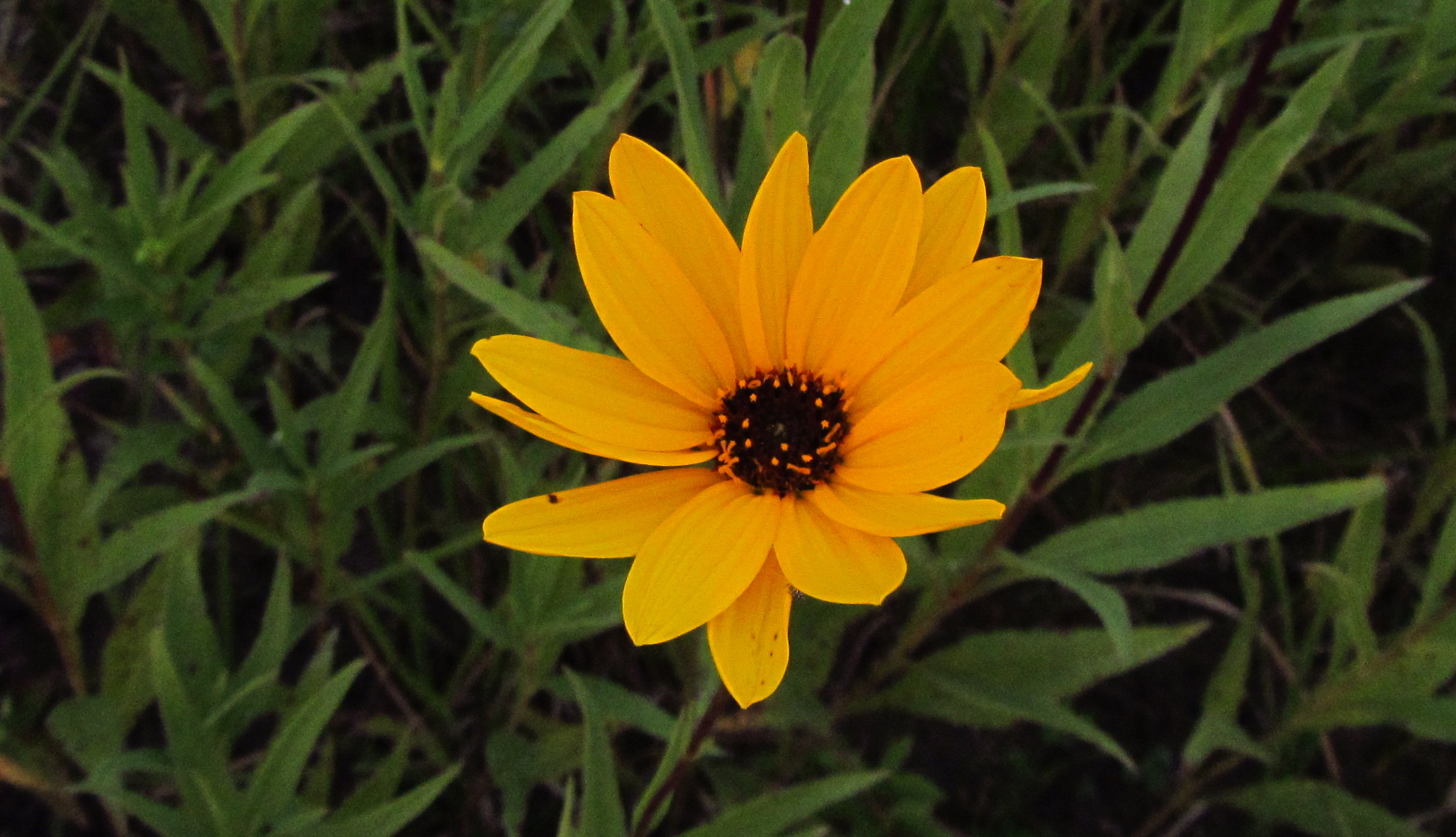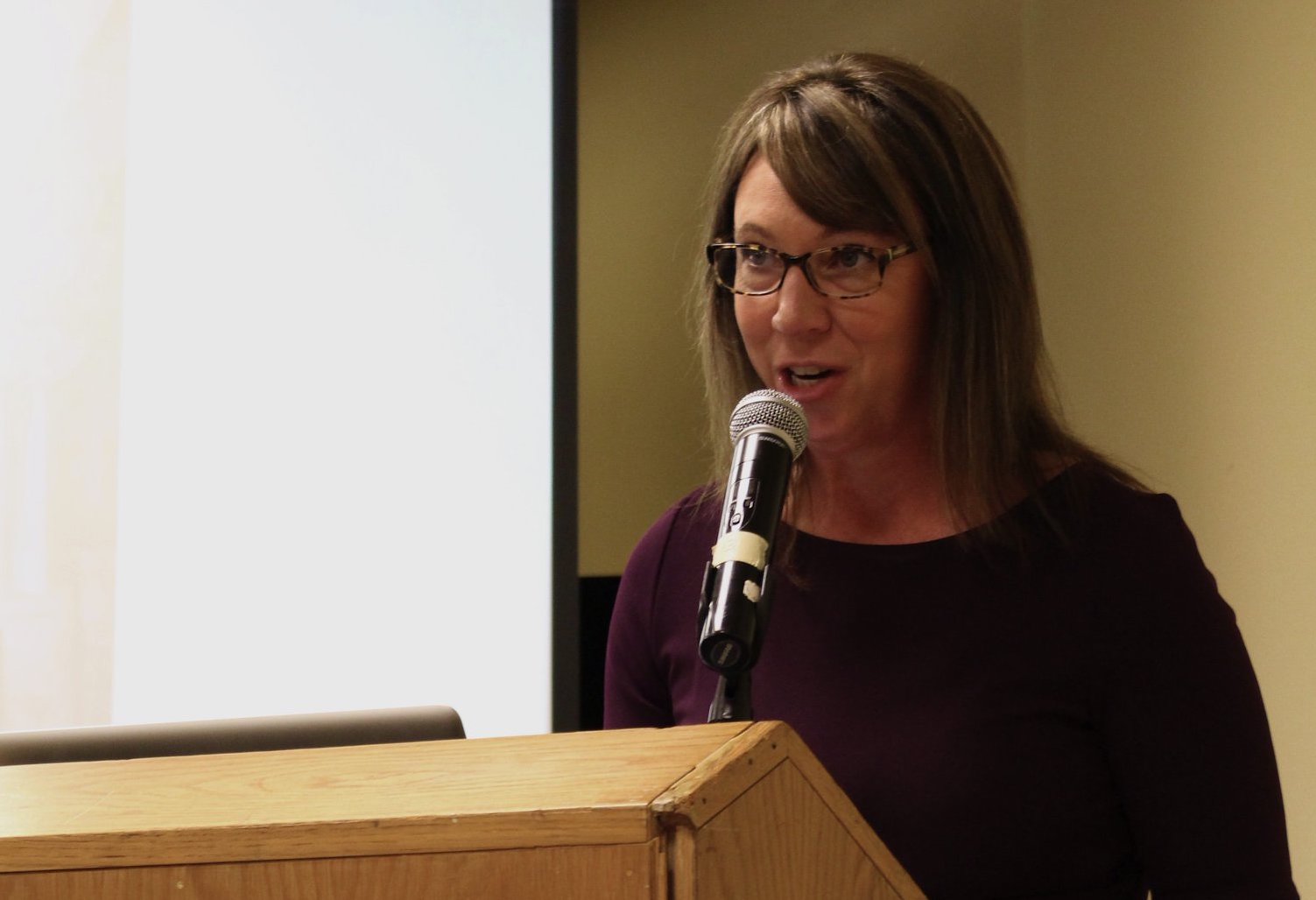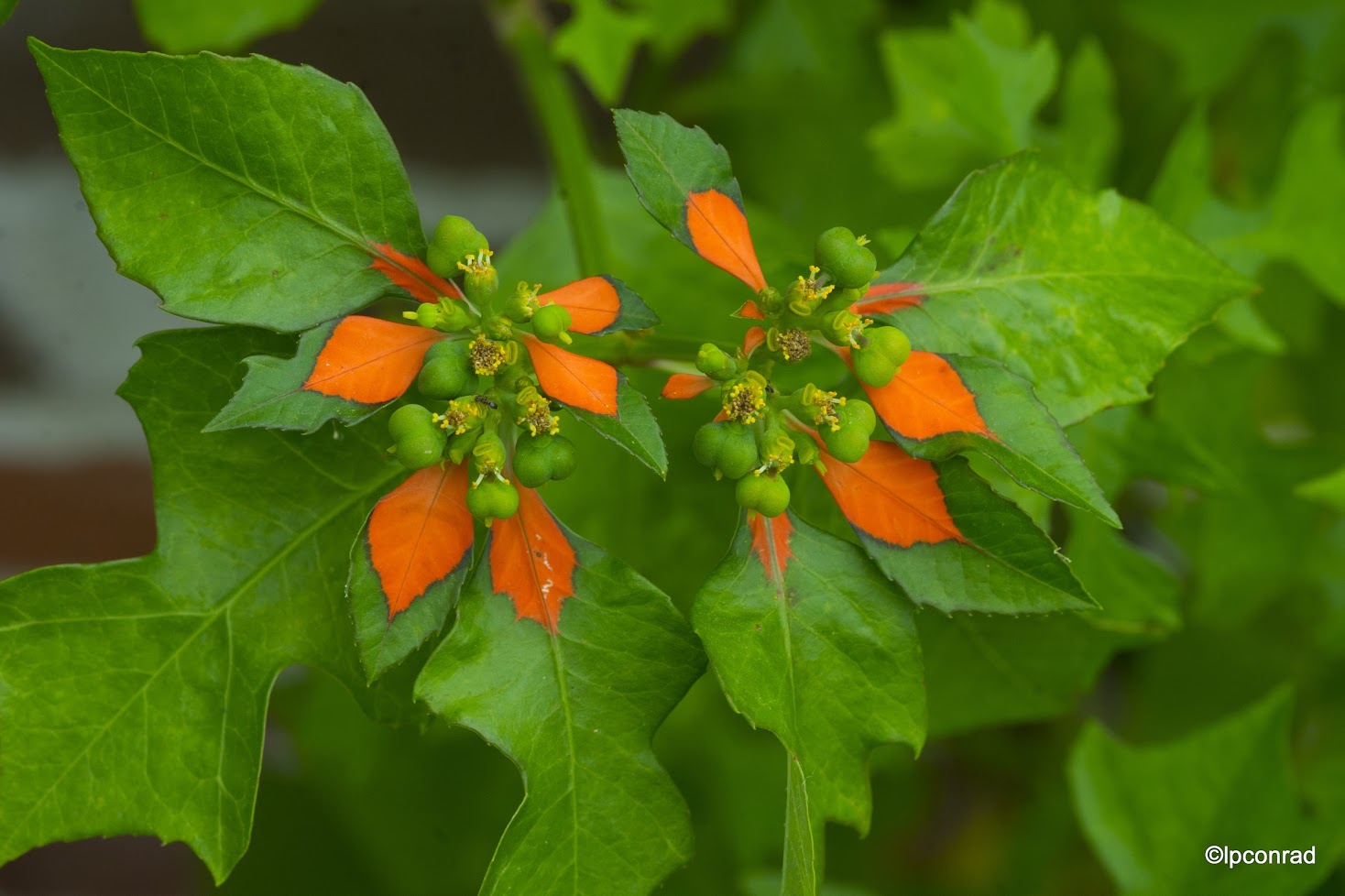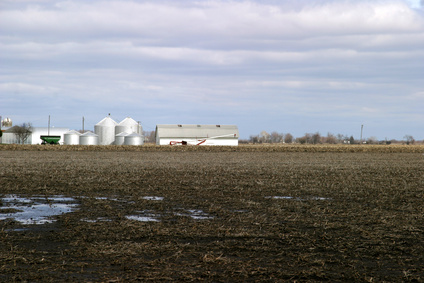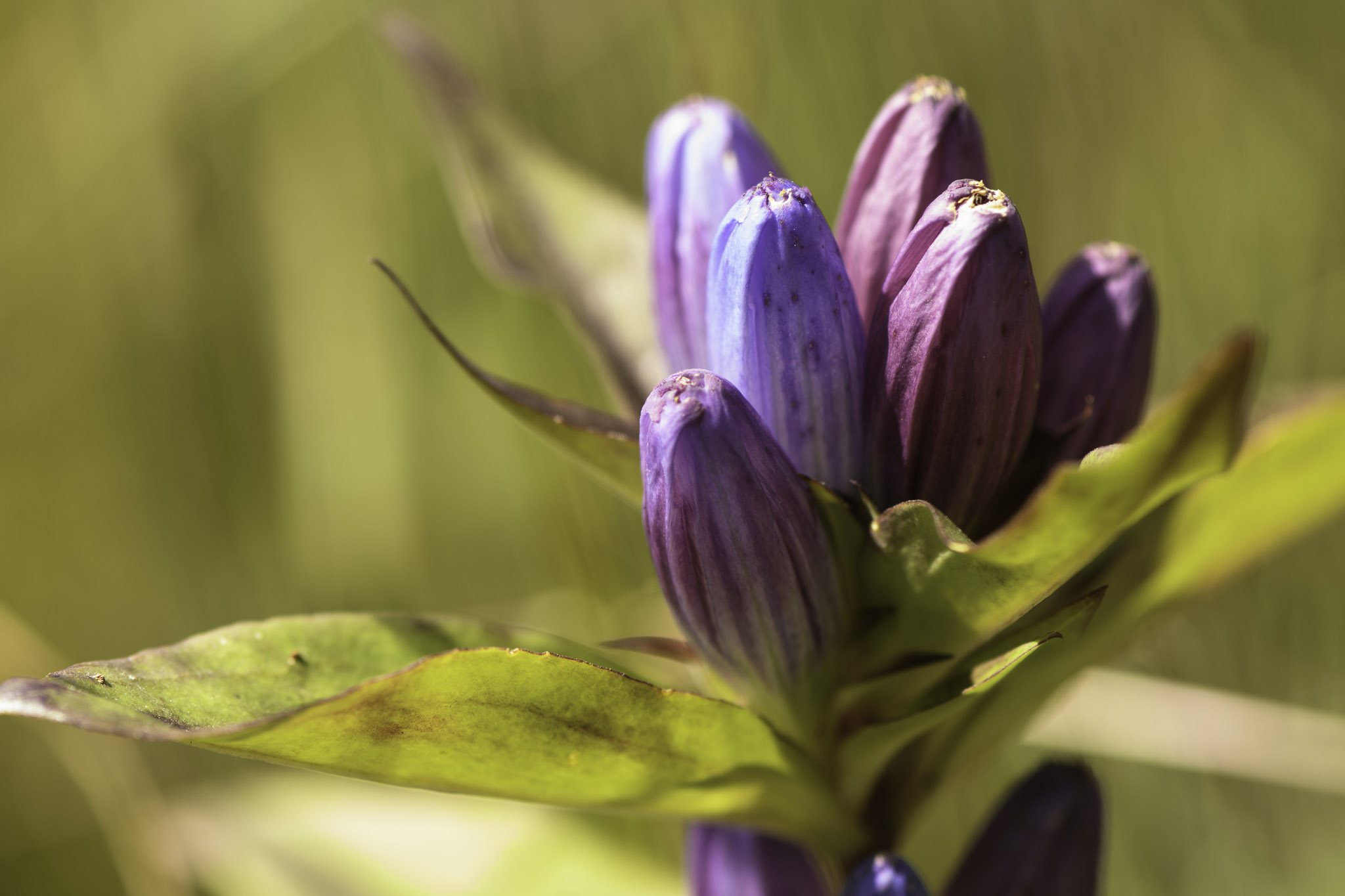Some native plants are unmistakable, but nailing down the ID on today’s wildflowers has been a challenge. When I first photographed a large colony of these plants on Mike Delaney’s restored prairie in Dallas County, I assumed they were sawtooth sunflowers (Helianthus grosseserratus) because of the serrated leaves. However, John Pearson of the Iowa Department of Natural Resources commented in the Iowa Wildflower Report Facebook group, “This may be Prairie Sunflower (Helianthus pauciflorus), note reddish disc flowers. The long, leafless upper stems, however, remind me of Western Sunflower (H. occidentalis).” Leland Searles, another expert on native plants, mentioned that “sunflowers can be confusing.”
I ruled out western sunflower for a couple of reasons. Mike collected the seed that spawned this colony at Tipton Prairie, a never-plowed patch of land in Greene County in the northwestern quadrant of Iowa. But western sunflower (sometimes called fewleaf sunflower) is primarily found in the eastern part of the state. In addition, several sources confirm the central disk florets on western sunflower flowerheads are yellow. Most of the flowerheads on these plants had reddish centers, which is typical for prairie sunflowers.
Mike thought the plants might be giant sunflowers (Helianthus giganteus), but the central disk florets on that plant are darker yellow. Also, there can be more than one flowerhead at the top of the upper stems on giant sunflower plants. These plants had one flowerhead per stem, another characteristic feature of prairie sunflowers. Finally, the upper part of the stems on Mike’s plants had no leaves. Giant sunflower plants have leaves on the upper stems.
So, I’m calling these prairie sunflowers. Sometimes known as stiff sunflowers, Helianthus pauciflorus plants are native to most of the U.S. and Canada. I haven’t seen them anywhere other than on Mike’s land. Next year I hope to visit Tipton Prairie in the late summer or early fall, when they would be blooming. UPDATE: After I published this post, Mike told me he didn’t find any of these at Tipton Prairie this year, but he did find them in the “Rippey strip,” a narrow patch of native prairie several miles long next to the 144 Diagonal road near Rippey in Greene County. He believes he must have collected the original seed from the Rippey area.

